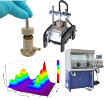TSC Surface
Product Description
Product Details
Quick Downloads
Detailed Description
The measuring cell TSC Surface is based on a gold-plated thermo block with integrated Pt100 temperature sensor. The surface of the thermo block is plane and mirror-like polished. On top of this surface different kinds of plane samples can be placed for electrochemical characterization.
The loaded cell is hermetically sealed from the outside by a PEEK housing allowing the investigation of air- and/or moisture-sensitive samples.
- An o-ring at the bottom side of the housing (6 x 1.5 mm in size, made of FFKM by default; FKM and EPDM are also available on demand) is pressed onto the sample from above and thus limits the electrochemically active area.
- Four concentrically mounted (and exchangeable!) contact pins establish the electrical contact to the sample's surface. This enables the investigation of substrates with an only one-sided conductive coating (like for instance gold-plated mica sheets) as well as securing a proper sample contact. Thus, the sample can be contacted - depending on its nature - from below via the thermo block or from above via the contact pins.
- Two lateral inlets enable the usage of lithium based pseudo reference electrodes or capillary micro-reference electrodes. In addition, the inlets can be used for filling the cell with additional electrolyte using the capillary filling system.
- The housing serves as electrolyte reservoir. An amount of approx. 0.6 mL is required.
The cell is closed with a PEEK screw cap with exchangeable electrode. By default, the TSC surface is delivered with a mirror-like polished glassy carbon electrode press-fitted in PEEK (electrochemically active surface area: 6 mm). In principle, all materials which can be pressed into PEEK are available, like for instance stainless steel.
Technical Details
- Sample dimensions:
- Rectangular samples: minimum side length: 10 mm, maximum side length: 15 mm
- Round samples: minimum diameter: 12 mm, maximum diameter: 20 mm
- Sample requirements: planar substrate, surface with low roughness; ideally, the sample is dimensionally stable when being set under low pressure (applied by o-ring and contact pins)
- Cell materials: gold- and nickel-plated copper (thermo block), PEEK (housing, cap, lateral screw plug, and screw fittings), glassy carbon (upper electrode), EPDM and FFKM (o-rings)
- Integrated Pt100 temperature sensor (thermo block)
- Temperature range (operation): -40 °C to +100 °C depending on sample amount and dew point
- Temperature range (storage): +10 °C to +30 °C
Suitable other Products
The measuring cell TSC Surface is compatible with the following products:- Investigation of the structure and dynamics at the interface electrode / electrolyte (e.g. Au(111) on mica / FAP ionic liquid) by impedance spectroscopy using the 3-electrode setup
- Study of the dynamics of electrochemical conversions, e.g. ferrocene / ferrocenium dissolved in ionic liquid on Au(111), using cyclic voltammetry and impedance spectroscopy
- Investigation of the electrochemical characteristics of thin, ion conducting films on semiconductor materials
- Corrosion studies





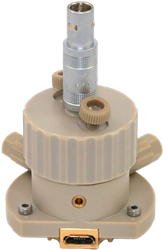
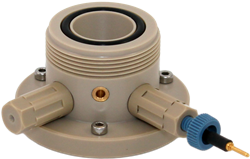
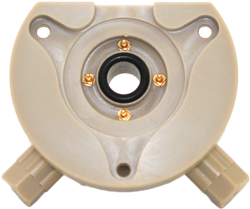
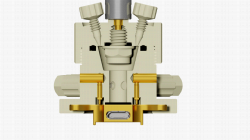
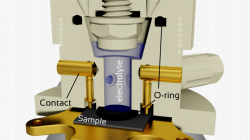
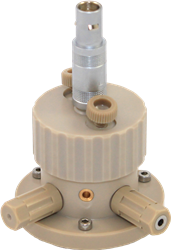
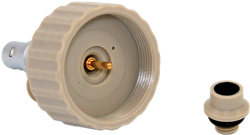







 Add to Request
Add to Request


